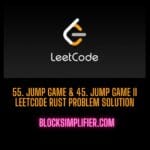Below is a detailed explanation for each of the Ethereum smart contract developer interview questions you provided. I’ll break them down by category and provide clear, concise, and accurate answers suitable for an intermediate-to-advanced audience familiar with Ethereum and Solidity.
Table of Contents
Technical Questions (Solidity, EVM, Smart Contract Development)
1. Solidity Basics & Best Practices
Explain the difference between memory, storage, and calldata in Solidity.
- Storage: Persistent data stored on the blockchain, expensive to modify, and tied to the contract’s state (e.g., state variables). Think of it as the contract’s “hard drive.”
- Memory: Temporary, mutable data that exists only during function execution (e.g., local variables). It’s cheaper and wiped after the call ends.
- Calldata: Immutable, read-only data passed into a function (e.g., function arguments in external calls). It’s gas-efficient and stored in the transaction payload.
What is the purpose of the receive() and fallback() functions?
- receive(): A special function that executes when the contract receives plain Ether (no data) without a function call. It’s optional and must be external payable.
- fallback(): A catch-all function triggered when a non-existent function is called or when Ether is sent with data that doesn’t match any function. It’s also external and can be payable.
How do you prevent reentrancy attacks in Solidity?
- Use the Checks-Effects-Interactions pattern: check conditions first, update state (effects), then interact with external contracts.
- Apply the nonReentrant modifier (e.g., from OpenZeppelin) to lock the function during execution.
- Avoid calling untrusted external contracts or use low-level calls with caution.
What are modifiers in Solidity, and how can they be used to enforce access control?
- Modifiers are reusable code blocks that run before (or after) a function executes. They’re defined with the modifier keyword.
- For access control, e.g., onlyOwner:solidity
modifier onlyOwner() { require(msg.sender == owner, "Not owner"); _; }This ensures only the owner can call the function.
2. Gas Optimization & Cost Efficiency
What techniques can be used to optimize gas usage in Solidity?
- Use uint256 instead of smaller types (e.g., uint8) to avoid packing/unpacking costs.
- Minimize storage updates (e.g., batch operations).
- Use external instead of public for functions called externally.
- Replace loops with mappings where possible.
How do you estimate and reduce the gas cost of a function call?
- Estimate using tools like Remix, Hardhat, or eth_estimateGas RPC calls.
- Reduce by minimizing state changes, using calldata for inputs, and avoiding expensive operations like string manipulation.
What are the trade-offs between mapping vs. array in Solidity?
- Mapping: O(1) lookup, no iteration, cheaper for key-value storage.
- Array: Allows iteration, O(n) lookup, more expensive for large datasets due to storage and gas costs.
Explain how unchecked blocks can optimize gas consumption.
- In Solidity 0.8+, arithmetic overflow checks are enabled by default. Wrapping operations in unchecked { … } skips these checks, saving gas when overflow is impossible or intentional.
3. EVM Internals & Execution Flow
How does Ethereum handle function execution and state changes?
- Transactions are executed by the EVM, which processes opcodes from compiled bytecode. State changes (e.g., updating storage) are recorded in the trie structure if the transaction succeeds and gas is sufficient.
What happens when a transaction runs out of gas?
- The transaction reverts, all state changes are discarded, and the gas spent is still deducted from the sender’s balance.
Explain how storage slots are assigned in Solidity.
- Each state variable gets a 256-bit slot (32 bytes). Variables smaller than 32 bytes may be packed into one slot if declared consecutively (e.g., two uint128 vars). Arrays and mappings use a hash-based slot system.
What is the difference between delegatecall and call, and when would you use each?
- call: Executes code in the target contract’s context, using its storage and msg.sender.
- delegatecall: Executes the target’s code in the caller’s context, using the caller’s storage and msg.sender.
- Use call for external interactions; use delegatecall for proxy patterns or libraries.
4. Smart Contract Security & Auditing
What are the most common security vulnerabilities in smart contracts, and how do you mitigate them?
- Reentrancy: Use nonReentrant or Checks-Effects-Interactions.
- Overflow/Underflow: Use Solidity 0.8+ or SafeMath.
- Uninitialized Storage: Initialize variables explicitly.
- Front-Running: Use commit-reveal schemes or pre-commit logic.
Explain the Checks-Effects-Interactions pattern and why it is important.
- Checks: Validate conditions (e.g., require).
- Effects: Update state (e.g., balances).
- Interactions: Call external contracts last.
- Prevents reentrancy by ensuring state is updated before external calls can exploit it.
What is integer overflow/underflow, and how has Solidity 0.8+ addressed this issue?
- Overflow/underflow occurs when arithmetic exceeds a type’s bounds (e.g., uint8(255) + 1 = 0). Solidity 0.8+ adds built-in checks that revert on overflow/underflow unless unchecked is used.
How do you securely store sensitive data in a smart contract?
- Avoid storing sensitive data on-chain (it’s public). Use hashes (e.g., keccak256) or off-chain storage with on-chain verification.
Explain the risks of using tx.origin for authentication.
- tx.origin is the original sender of the transaction, not the immediate caller. A malicious contract can trick a user into calling it, bypassing tx.origin checks. Use msg.sender instead.
5. ERC Standards & Token Development
What are the key differences between ERC-20, ERC-721, and ERC-1155?
- ERC-20: Fungible tokens (e.g., currencies), identical units.
- ERC-721: Non-fungible tokens (NFTs), unique IDs.
- ERC-1155: Multi-token standard, supports fungible and non-fungible tokens in one contract.
How do you implement a custom ERC-20 token with a minting function?
solidity
contract MyToken {
mapping(address => uint256) public balances;
uint256 public totalSupply;
address public owner;
constructor() {
owner = msg.sender;
}
function mint(address to, uint256 amount) external {
require(msg.sender == owner, "Not owner");
totalSupply += amount;
balances[to] += amount;
}
}What is the approve() and transferFrom() mechanism in ERC-20?
- approve(spender, amount): Allows spender to transfer amount of the caller’s tokens.
- transferFrom(from, to, amount): Transfers amount from from to to, deducting from the approved allowance.
How would you design a royalty mechanism for NFTs?
- Use ERC-2981: Add a royaltyInfo(tokenId) function returning (recipient, amount) for a sale. Integrate with marketplaces like OpenSea.
6. Smart Contract Upgradability & Proxy Patterns
What are transparent and UUPS proxies, and how do they enable upgradability?
- Transparent Proxy: Routes calls via a proxy admin; logic contract can be swapped without changing the proxy address.
- UUPS (Universal Upgradeable Proxy Standard): Logic contract contains upgrade logic, reducing proxy size and gas costs.
- Both separate storage (proxy) from logic, allowing updates.
How does the diamond proxy pattern (EIP-2535) improve modular smart contracts?
- Supports multiple “facets” (logic contracts) sharing one storage contract via delegatecall. Enables modular, unlimited upgrades.
What are the risks of upgrading a smart contract?
- Storage layout mismatches, accidental data loss, or introducing bugs. Mitigate with thorough testing and versioning.
Industry Knowledge & Blockchain Concepts
7. Layer 2 Scaling & Gas Fees
Explain how Ethereum Layer 2 scaling solutions (Optimistic Rollups vs. ZK-Rollups) work.
- Optimistic Rollups: Assume transactions are valid, process off-chain, and post to L1. Fraud proofs challenge invalidity.
- ZK-Rollups: Use zero-knowledge proofs to validate batches off-chain, posting compact proofs to L1. More secure but computationally intensive.
What is EIP-1559, and how has it changed Ethereum’s gas fee mechanism?
- Introduced a base fee (burned) + priority fee (to miners). Stabilizes fees and makes costs predictable.
How does Ethereum’s sharding plan impact smart contract development?
- Sharding splits the blockchain into parallel chains, increasing throughput. Developers may need to optimize for cross-shard communication.
8. Decentralized Finance (DeFi) & Real-World Applications
How would you design a staking smart contract that distributes rewards fairly?
solidity
contract Staking {
mapping(address => uint256) public stakes;
uint256 public totalStaked;
uint256 public rewardPool;
function stake(uint256 amount) external {
stakes[msg.sender] += amount;
totalStaked += amount;
}
function distributeRewards() external {
for (/* iterate stakers */) {
uint256 reward = (stakes[staker] * rewardPool) / totalStaked;
// Transfer reward
}
}
}Explain Automated Market Makers (AMMs) and how they function in DEXs.
- AMMs use liquidity pools (e.g., x * y = k) instead of order books. Traders swap against the pool, adjusting prices via the formula.
What are flash loans, and how can they be exploited?
- Loans borrowed and repaid in one transaction. Exploitable for arbitrage or manipulating AMM prices if not secured.
9. Cross-Chain Interoperability & Oracles
How do cross-chain bridges enable interoperability between Ethereum and other blockchains?
- Lock assets on one chain, mint wrapped versions on another via a trusted or trustless protocol.
Explain the role of oracles in smart contracts. How do they introduce security risks?
- Oracles fetch off-chain data (e.g., prices). Risks: centralization, manipulation, or stale data.
How does Chainlink VRF ensure randomness in Ethereum smart contracts?
- Provides verifiable random numbers using cryptographic proofs, preventing manipulation.
Practical Problem-Solving & Coding Challenges
10. Solidity Coding Challenges
A. Write a Simple Voting Smart Contract
solidity
contract Voting {
mapping(address => bool) public hasVoted;
mapping(string => uint256) public votes;
string[] public candidates;
function addCandidate(string calldata candidate) external {
candidates.push(candidate);
}
function vote(string calldata candidate) external {
require(!hasVoted[msg.sender], "Already voted");
votes[candidate]++;
hasVoted[msg.sender] = true;
}
function getWinner() external view returns (string memory) {
uint256 maxVotes = 0;
string memory winner;
for (uint256 i = 0; i < candidates.length; i++) {
if (votes[candidates[i]] > maxVotes) {
maxVotes = votes[candidates[i]];
winner = candidates[i];
}
}
return winner;
}
}B. Implement a Time-Locked Wallet
solidity
contract TimeLockedWallet {
uint256 public unlockTime;
address public owner;
constructor(uint256 _unlockTime) payable {
unlockTime = _unlockTime;
owner = msg.sender;
}
function withdraw() external {
require(msg.sender == owner, "Not owner");
require(block.timestamp >= unlockTime, "Locked");
payable(owner).transfer(address(this).balance);
}
}C. Prevent a Reentrancy Attack
solidity
function withdraw(uint256 amount) public {
require(balances[msg.sender] >= amount, "Insufficient balance");
balances[msg.sender] -= amount; // Effects before interaction
(bool success, ) = msg.sender.call{value: amount}("");
require(success, "Transfer failed");
}Behavioral & Situational Questions
11. Smart Contract Development & Team Collaboration
- Debugging: Use tools like Hardhat, trace logs, and isolate issues step-by-step.
- High-Value Contracts: Audit with tools (e.g., Slither) and external auditors.
- Staying Updated: Follow Ethereum blogs, Solidity GitHub, and EIPs.
12. Handling Production Issues
- Critical Vulnerability: Pause the contract (if pausable), deploy a fix, and migrate state.
- Failed Transactions: Debug via explorers, refund stuck funds via a recovery function.
Bonus: Advanced Ethereum Topics
13. MEV (Maximal Extractable Value) & Flashbots
- MEV: Profit extracted by reordering/mining transactions (e.g., arbitrage).
- Flashbots: Private transaction relay to miners, reducing front-running.
14. Account Abstraction & Smart Contract Wallets
- ERC-4337: Enables smart contract wallets without protocol changes, improving UX (e.g., gasless tx).
- Gasless System: Use meta-transactions or relayers to pay gas for users.



